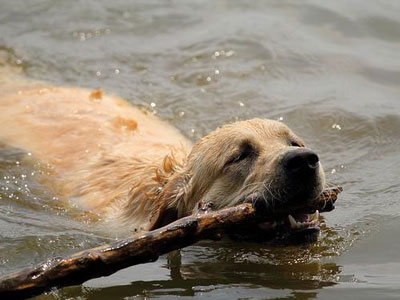
How can dogs be exposed to HABs?
Animals can be exposed to HABs and associated toxins by
Contacting any affected water body including lakes, rivers, or ponds. Because animals are attracted to cyanobacteria (blue-green algae), they drink the water and eat algal material. Dogs in particular lick algae caught in their fur after being in the water. Consuming water and algae from residential pools or decorative ponds. Ingesting blue-green algae health supplements.
How can I keep my dog safe from HABs?
Check if a waterbody has a reported bloom by checking the HAB Reports Map, contacting the waterbody manager, and looking for posted advisory signs.
CLICK HERE TO VIEW HAB Incident MAP
Check to see if the water has a scum, algal mats, or is discolored.
Do not let your dog drink, wade, or swim in HAB-affected water.
Do not let your dog eat scum or algal material.
Wash your pets with clean water after the lake or river play. Provide clean drinking water.
What are signs of possible cyanobacterial toxin poisoning in dogs?
Animals can experience symptoms within minutes to days following exposure to the cyanobacterial toxins (cyanotoxins). Symptoms they might experience include vomiting, diarrhea, weakness, difficulty breathing, seizures, or death. There were 18 reported dog deaths in 2017.
If your pet experiences these symptoms after exposure, contact your veterinarian immediately.







